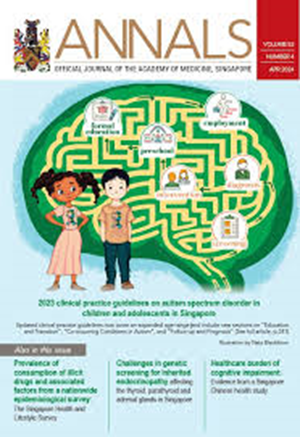新加坡抗转录中间因子1γ自身抗体阳性皮肌炎患者的特征。
IF 5.2
4区 医学
Q2 Medicine
引用次数: 1
摘要
本研究旨在确定抗转录中介因子1 γ自身抗体(anti-TIF1-γ Ab)阳性皮肌炎患者的临床特征和结果,并根据区域癌症趋势提出癌症筛查方案。方法对2015年1月1日至2021年6月30日在新加坡一家三级医院就诊的皮肌炎患者的病史、体格检查和调查数据进行回顾性分析。比较抗tif1 -γ抗体阳性和抗tif1 -γ抗体阴性皮肌炎患者的差异。RESULTSNinety-six皮肌炎患者和36例分析阳性anti-TIF1 -γAb。anti-TIF1γAb-positive患者更频繁的鸡血石皮疹,披肩,periungual红斑,皮套,Gottron的丘疹、吞咽困难和躯干的弱点(P < 0.05)。肺间质性疾病、多发性关节炎、皮肤溃疡、手掌丘疹和机械手发生率较低(P<0.05)。随访48个月后,与抗体阴性患者相比,抗tif1 -γ抗体阳性患者发生癌症的比例更高(63.9%对8.5%;优势比19.1,95%置信区间6.1 ~ 59.8;P < 0.001)。最常见的恶性肿瘤是鼻咽癌和乳腺癌,其次是肠癌、肺癌和非霍奇金淋巴瘤。大多数恶性肿瘤(78.3%)发生在皮肌炎发病前13个月或发病后4个月。anti-TIF1-γ抗体阳性患者的死亡率显著高于抗体阴性患者(36.1% vs 16.7%, P=0.031), Kaplan-Meier估计24个月生存率分别为66%和89% (P=0.0153)。结论:这些观察性数据支持新加坡抗tif1 -γ抗体阳性皮肌炎患者鼻咽癌和其他恶性肿瘤的定期筛查。本文章由计算机程序翻译,如有差异,请以英文原文为准。
Characteristics of anti-transcriptional intermediary factor 1 gamma autoantibody-positive dermatomyositis patients in Singapore.
INTRODUCTION
This study aimed to determine the clinical profile and outcome of anti-transcriptional intermediary factor 1 gamma autoantibody (anti-TIF1-γ Ab)-positive dermatomyositis patients and propose cancer screening programmes based on regional cancer trends.
METHOD
Data on history, physical findings and investigations were collected using chart review on dermatomyositis patients seen at a tertiary hospital in Singapore from 1 January 2015 to 30 June 2021. Comparisons were made between anti-TIF1-γ Ab-positive and anti-TIF1-γ Ab-negative dermatomyositis.
RESULTS
Ninety-six dermatomyositis patients were analysed and 36 patients were positive for anti-TIF1-γ Ab. Anti-TIF1-γ Ab-positive patients had more frequent heliotrope rashes, shawl sign, periungual erythema, holster sign, Gottron's papules, dysphagia and truncal weakness (P<0.05). They had less frequent interstitial lung disease, polyarthritis, cutaneous ulcers, palmar papules and mechanic's hands (P<0.05). After 48 months of follow-up, a higher proportion of anti-TIF1-γ Ab-positive patients developed cancer compared with Ab-negative patients (63.9% versus 8.5%; odds ratio 19.1, 95% confidence interval 6.1-59.8; P<0.001). Nasopharyngeal carcinoma (NPC) and breast cancer were the most common malignancies, followed by bowel, lung and non-Hodgkin lymphoma. Most malignancies (78.3%) occurred within 13 months prior to, or 4 months after the onset of dermatomyositis. The mortality rate for anti-TIF1-γ Ab-positive patients was significantly higher than Ab-negative patients (36.1% vs 16.7%, P=0.031), and Kaplan-Meier survival estimates at 24 months were 66% and 89%, respectively (P=0.0153).
CONCLUSION
These observational data support periodic screening of NPC and other malignancies in patients with anti-TIF1-γ Ab-positive dermatomyositis in Singapore.
求助全文
通过发布文献求助,成功后即可免费获取论文全文。
去求助
来源期刊

Annals Academy of Medicine Singapore
医学-医学:内科
CiteScore
4.90
自引率
5.80%
发文量
186
审稿时长
6-12 weeks
期刊介绍:
The Annals is the official journal of the Academy of Medicine, Singapore. Established in 1972, Annals is the leading medical journal in Singapore which aims to publish novel findings from clinical research as well as medical practices that can benefit the medical community.
 求助内容:
求助内容: 应助结果提醒方式:
应助结果提醒方式:


